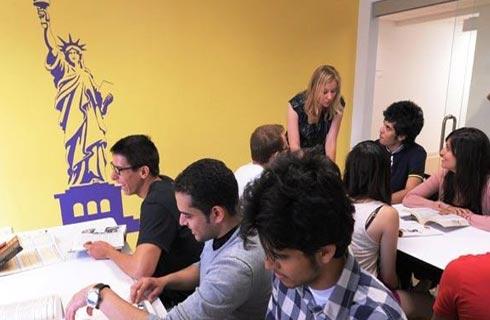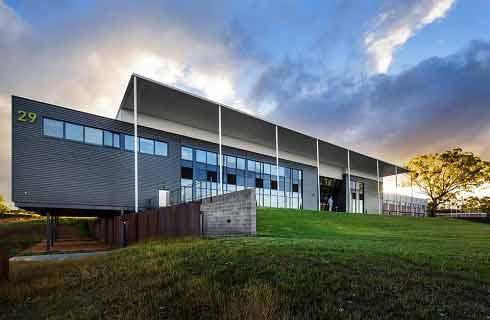- IDP China>
- 课程库>
- 工程与技术>
- 工程>
- 生物医学工程>
- Doctor of Philosophy in Biomedical Engineering - Bioimaging/ Molecular Imaging
生物医学工程哲学博士-生物成像/分子成像
Doctor of Philosophy in Biomedical Engineering - Bioimaging/ Molecular Imaging

学历文凭
Ph.D.

专业院系
Department of Biomedical Engineering

开学时间

课程时长

课程学费

国际学生入学条件
IDP—雅思考试联合主办方

雅思考试总分
6.5
- 雅思总分:6.5
- 托福网考总分:90
- 托福笔试总分:160
- 其他语言考试:Duolingo - 110
CRICOS代码:
申请截止日期: 请与IDP联系 以获取详细信息。
课程简介
The Graduate Program in Biomedical Engineering at Stony Brook University trains individuals with baccalaureate degrees in engineering, applied mathematics, and the sciences to provide them with the synthesis, design, and analysis skills necessary to contribute effectively to the advancement of technology in health and medical care. The M.S. and Ph.D. degree programs are specifically designed to provide graduate students and engineering professionals with the knowledge and skills necessary to transfer recent developments in the basic sciences into commercially viable products and processes. Training of the student is accomplished by exposing the individual to the biology, engineering, and business concepts critical to succeeding in the biomedical research and development environment.<br><br>The field of Bio-imaging has experienced phenomenal growth within the last century. Whereas imaging was the prerogative of the defense and the space science communities in the past, with the advent of powerful, less-expensive computers, new and expanded imaging systems have found their way into the medical field. Systems range from those devoted to planar imaging using x-rays to technologies that are just emerging, such as virtual reality. Hardware design and software algorithm development for a wide array of imaging technologies applicable to medicine, including MRI, fMRI, PET and CT.
相关申请
 预科
预科 奖学金
奖学金 实习机会
实习机会 在校学习
在校学习 跨境学习
跨境学习 校园授课-线上开始
校园授课-线上开始 在线/远程学习
在线/远程学习
开学时间&学费
学费信息仅供参考,请与IDP联系以获取详细信息
| 开学时间 | 时长 | 学费 | 地点 |
|---|
学校排名

世界排名251
数据源:
泰晤士高等教育世界大学排名
关于纽约州立大学石溪分校

石溪大学(简称 SBU)成立于 1957 年,位于纽约州长岛,是一所充满活力的公立大学。该大学共有约 25000 名学生,其中包括 17000 多名本科生,支持着一个庞大而多元化的学术社区,同时提供丰富而令人兴奋的大学体验。该大学提供广泛的本科、研究生和博士课程,涵盖多个领域。该校在科学、工程和医学方面拥有坚实的基础,并辅以艺术、人文和社会科学课程。热门专业包括生物医学工程、海岸环境研究和计算机科学,每个专业都将学校的前沿研究与基于实践经验的学习相结合,为学生完成学业后从事专业工作做好准备。根据2024年《美国新闻与世界报道 》,SBU 在纽约州公立大学中排名第一,在全美公立大学中排名第 26 位。同一份研究报告还将该大学的社会流动性排在全美第 12 位,并跻身全美十大最多元化大学之列。SBU 是纽约州立大学(SUNY)系统的一部分,并于 2022 年被纽约州州长正式指定为纽约州立大学的两所旗舰大学之一。该大学的长岛校区为学生提供了一系列美丽的海滩,同时还拥有靠近纽约市的所有优势,为学生提供了丰富的教育和课外活动机会。
本校相关课程

妇女与性别研究文学士
学历文凭
Bachelor Degree
开学日期
课程费用总额


技术系统管理理学学士
学历文凭
Bachelor Degree
开学日期
课程费用总额


可持续发展研究文学学士学位
学历文凭
Bachelor Degree
开学日期
课程费用总额


西班牙语言文学学士学位
学历文凭
Bachelor Degree
开学日期
课程费用总额


社会学文学学士
学历文凭
Bachelor Degree
开学日期
课程费用总额


社会工作科学学士学位
学历文凭
Bachelor Degree
开学日期
课程费用总额

其他相关课程

Bachelor of Science in Engineering Management - Biomedical Engineering (Neural Engineering Track)
伊利诺伊理工大学-CEG
学历文凭
Bachelor Degree
开学日期
课程费用总额


生物医学工程专业双理科学士学位,监管生物医学工程领域的工程学硕士
 乔治华盛顿大学
乔治华盛顿大学泰晤士高等教育世界大学排名:209
学历文凭
Combined Baccalaureate and Master's Prog
开学日期
课程费用总额


电气和计算机工程应用科学硕士-生物医学工程
 滑铁卢大学
滑铁卢大学学历文凭
Masters Degree
开学日期
课程费用总额


Doctor of Philosophy in Biomedical Engineering
 南佛罗里达大学
南佛罗里达大学泰晤士高等教育世界大学排名:395
学历文凭
Ph.D.
开学日期
课程费用总额


生物医学工程理学硕士
 新泽西理工学院
新泽西理工学院泰晤士高等教育世界大学排名:549
学历文凭
Masters Degree
开学日期
课程费用总额


Master of Science in Biomedical Engineering - Biophotonics
 加州大学欧文分校
加州大学欧文分校学历文凭
Masters Degree
开学日期
课程费用总额










